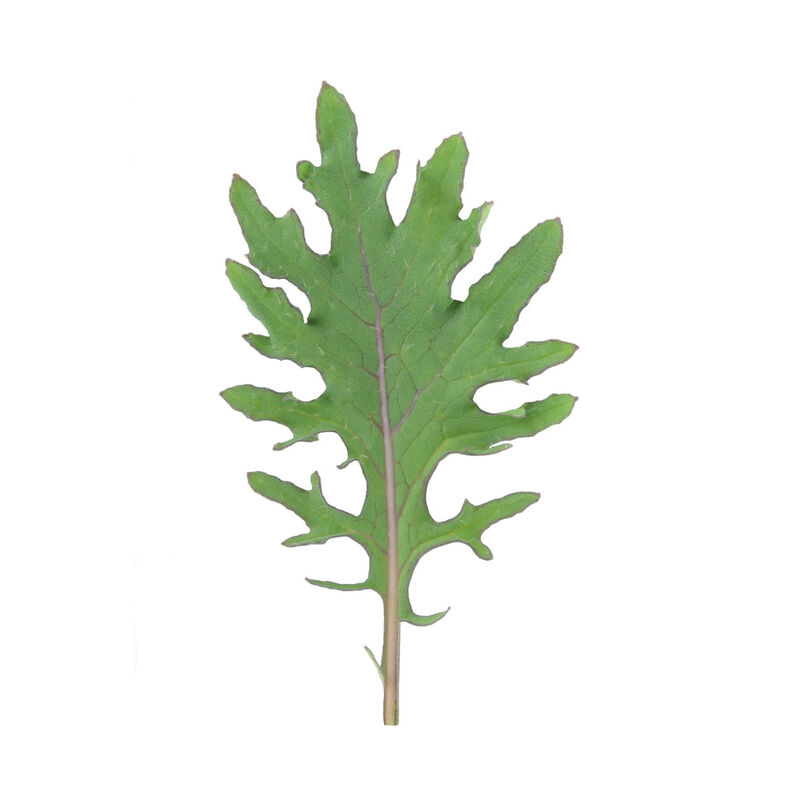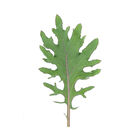Red Russian Kale Seed
Red Russian Kale Seed
Smooth, green, purple-veined leaves for baby leaf and bunching.
Stems are purple; leaves are flat and toothed with purple veins. Mature plants are medium-tall and leaves are tender compared to other kales. For salads and light cooking. Sized seed. Also available in organic seed.Specs:
SCIENTIFIC NAME:
Brassica oleraceaCULTURE:
Kale prefers a fertile, well-drained soil high in organic matter with a pH range of 6.0–7.5. Consistent moisture will produce the highest-quality leaves. For baby-leaf production, see the Baby Leaf Brassica Greens culture.DAYS TO MATURITY:
From date of direct seeding; subtract about 14 days for days to maturity from transplant.DIRECT SEEDING:
Plant from early spring to approximately 3 months before expected fall frost. For bunching: Sow 3–4 seeds every 12–18", ½" deep, in rows 18–36" apart. Thin to 1 plant per group.AVG. DIRECT SEEDING RATE:
For bunching: 1,000 seeds/220', 1 oz./1,110', 1 lb./24,000'. TRANSPLANTING: Early Spring Crop: Use varieties suited to warm-season production. Sow 2 seeds per cell in 50- to 72-cell plug flats, 3–4 seeds/in. in 20-row flats; or, in outdoor beds ¼" deep. Seedlings should be ready to transplant in 4–6 weeks. If possible, keep soil temperature over 75°F (24°C) until germination, then reduce air temperature to about 60°F (16°C). Transplant outdoors 12–18" apart in rows 18–36" apart. Kale prefers cooler growing temperatures, between 55–75°F (13–24°C), optimum being 60–70°F (16–21°C), but will produce good crops under warmer, summer conditions. Fall Crop: Start seedlings as above in May and transplant to the garden in June–July. To ensure mature heads, seed the crop early in areas where heavy freezes occur early in fall. Winter Crop: Successful kale crops can be grown where winters are mild and temperatures rarely fall below 32°F (0°C). Transplants can be set out from September to February in these regions.INSECT PESTS:
Kale is not as afflicted with pests as are other brassica crops such as cabbage. Apply row covers at the time of planting to exclude pests from the crop. Control cabbage worms and loopers with Bacillus thuringiensis (Bt).DISEASE:
Adhere strictly to a preventive program including: (1) long crop rotations with non-brassica crops, (2) clean starting mixes and outdoor seedbeds, and (3) strict sanitation practices. Johnny's Selected Seeds only sells seed lots of kale that have tested negative for black rot (Xanthomonas campestris pv. campestris) and black leg (Phoma lingam).HARVEST:
Beginning about 2 months after planting, harvest by clipping individual leaves. Kale is very hardy, and the eating quality will improve into the late fall with light frost. Late-summer sown or planted collards can be wintered in cold frames or hoophouses, or in the open in mild regions, to extend the season. Protecting with row covers can extend the harvest period.SIZED SEEDS:
"Sized" seeds have been sorted so they are roughly the same size. This consistency allows for more accurate spacing with mechanical seeders and more even germination. Kale seeds are sized, except when noted in the product description.TRANSPLANTS:
Avg. 6,400 plants/oz.SEEDS/LB.: Avg. 124,000.PACKET:
100 seeds, sows 22'.Johnny's is committed to your success, every step of the way.
We want you, our customer, to be 100% satisfied with all of our seeds, tools, and supplies.
If anything you purchase from us proves unsatisfactory, we will either replace the item or refund the purchase price.










